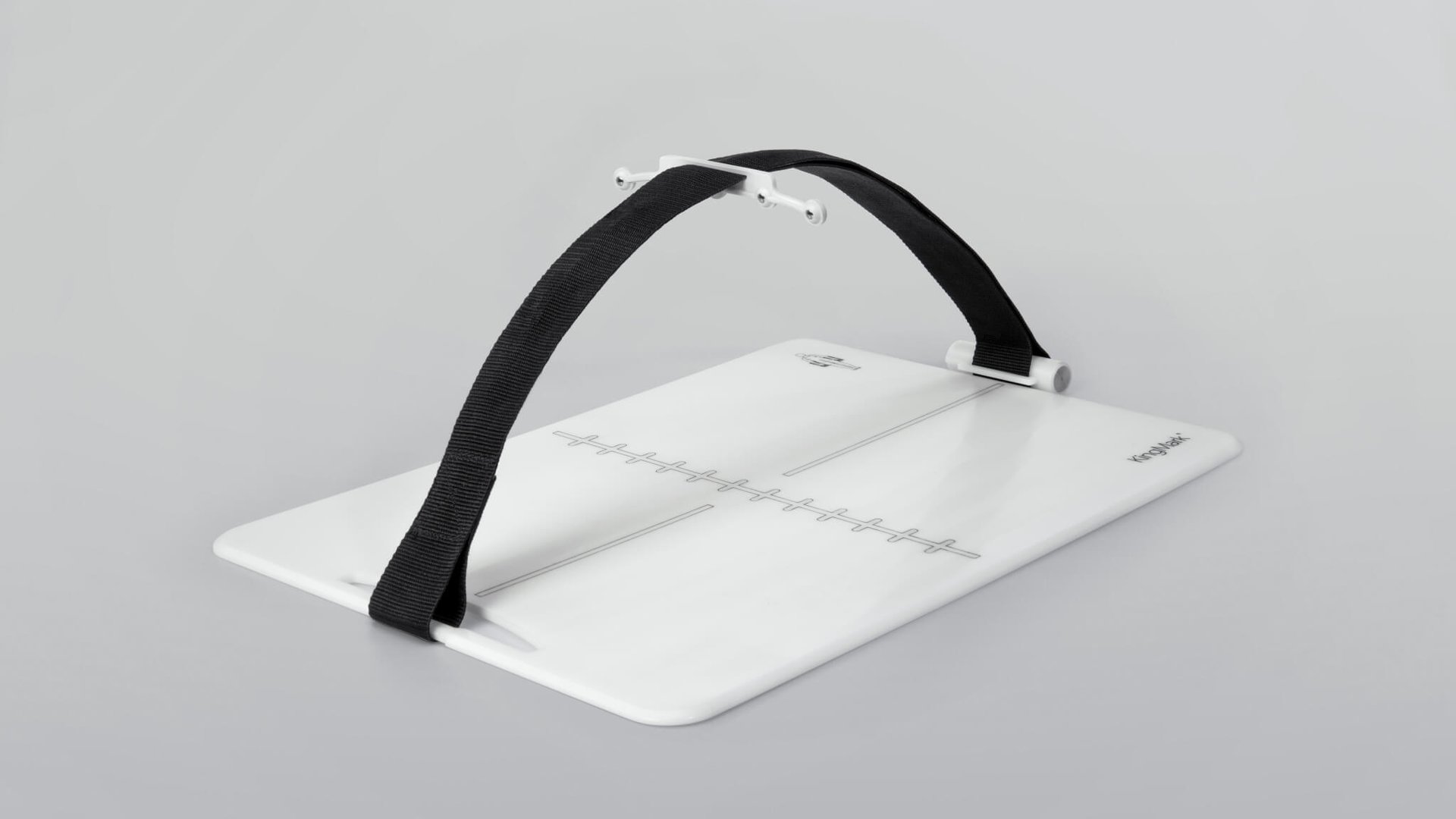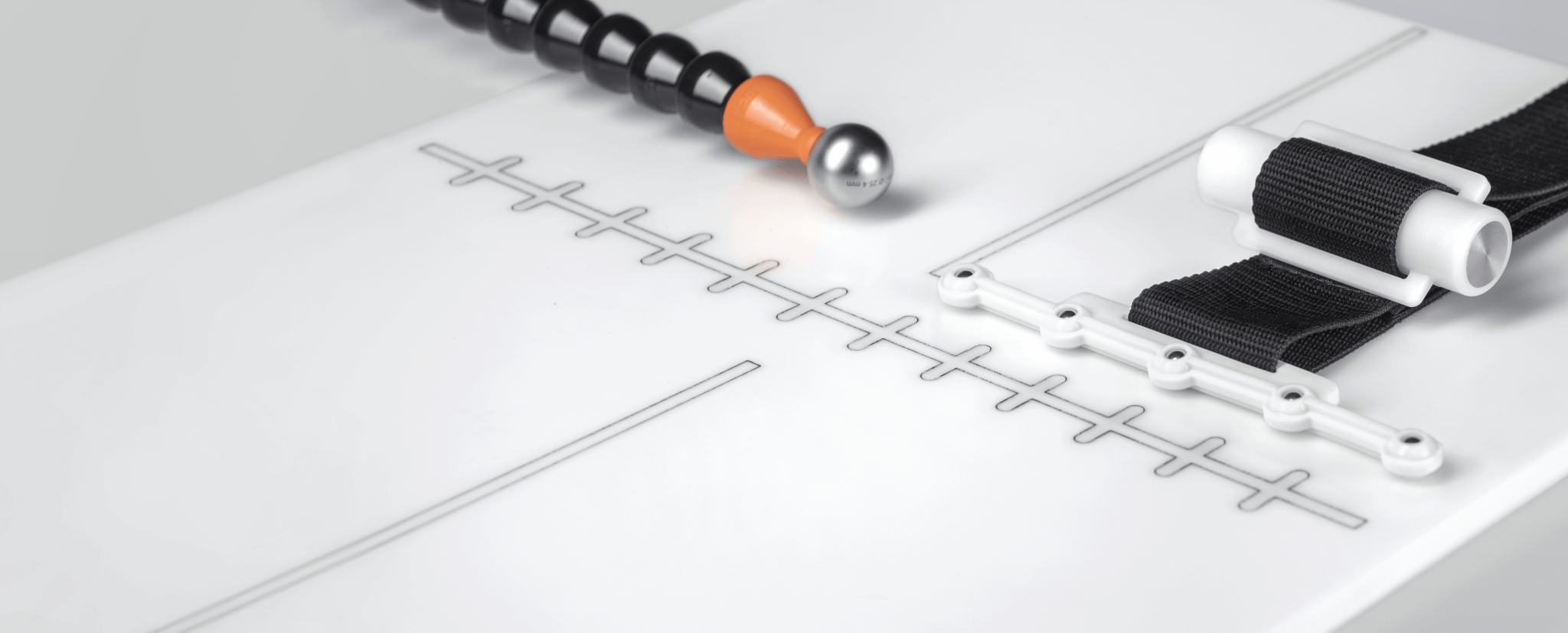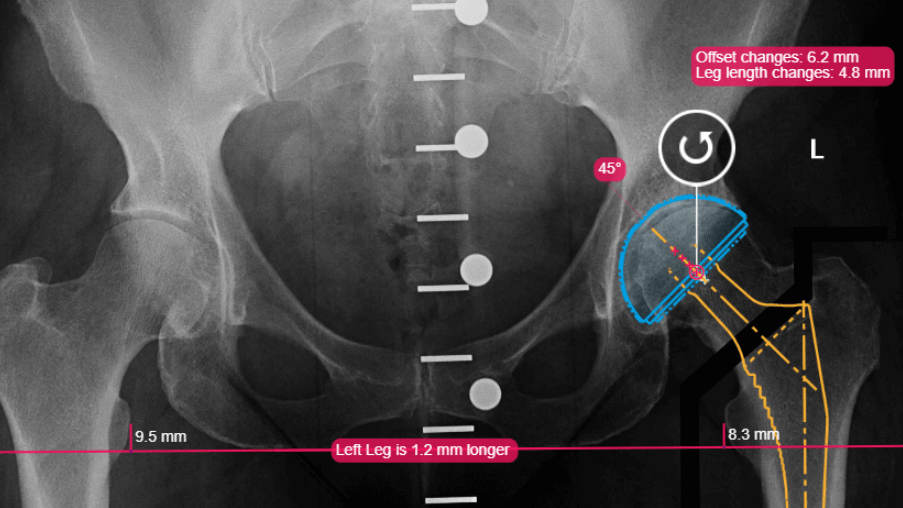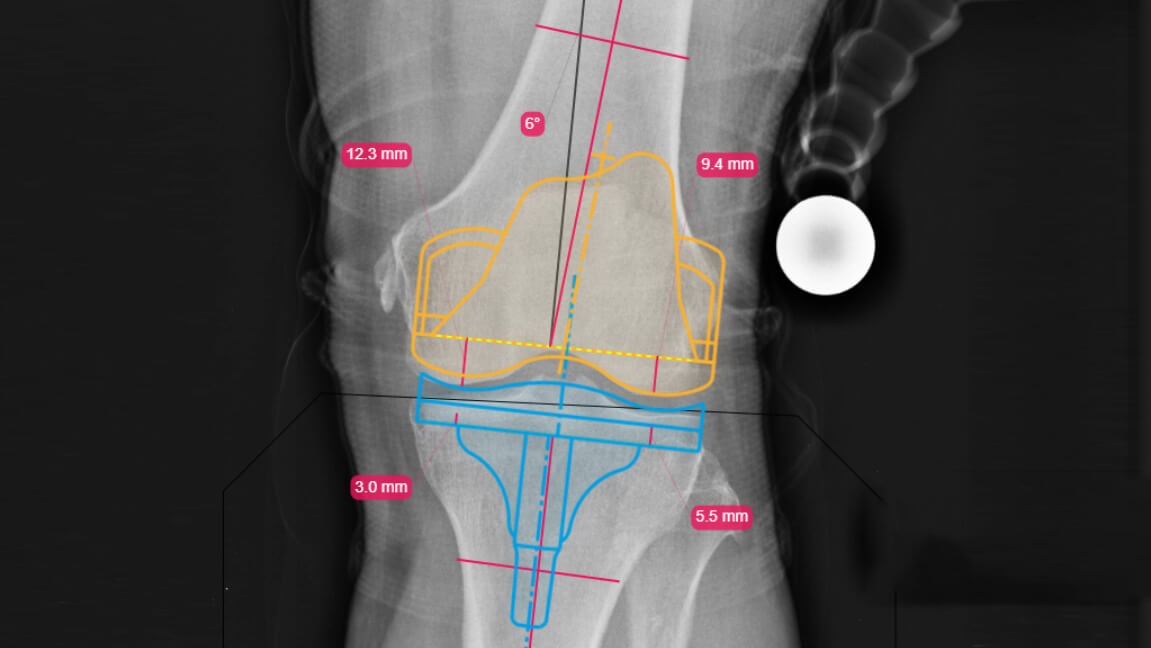Address magnification factors to ensure accurate templating
Accurate templating and sizing of implants in orthopedic surgeries can reduce the duration of the procedure and the risk of complications.1 Yet, accurate templating is only possible when the radiological magnification factor is known. Using calibration techniques reduces magnification errors caused by patient size and position and helps you achieve accurate digital templating.2

KingMark
For AP pelvic images

VoyantMark
For knee, upper limb, foot and ankle
KingMark
Streamline your templating process by using KingMark, our patented3, adjustable, state-of-the-art double-marker calibration tool for AP pelvic X-Ray images. In clinical trials4 KingMark was shown to be superior to conventional, single-ball markers.
VoyantMark
VoyantMark, our single marker device, aids in measuring patient anatomy for hip, knee, shoulder and foot & ankle procedures. This device is automatically recognized while performing preop planning and allows for the selection of the most appropriate template.
Interested in learning more about calibration?
Risk of complications reference: Amro Alnahhal, Nayef Aslam-Pervez and Hassaan Q. Sheikh (2019) Templating Hip Arthroplasty
Duration of the procedure references: Atesok K, Galos D, Jazrawi LM et al. (2015) Preoperative Planning in Orthopaedic Surgery. Current Practice and Evolving Applications. Bull Hosp Jt Dis (2013) 73:257–26 Hsu AR, Gross CE, Bhatia S et al. (2012) Template-directed instrumentation in total knee arthroplasty: cost savings analysis. Orthopedics 35:e1596-600.Baxter, J., Barlow, T., Karthikeyan, S., & Mayo, D. K. (2012). The Accuracy of Automatic Calibration of Digital Pelvic Radiographs Using two Different Scale Markers: A Comparative Study. HIP International, 22(1), 82-89.
Patented as US8,075,184 and EP2,330,999
King et al., A novel method of accurately calculating the radiological magnification of the hip, J Bone Joint Surg Br. 2009 Sep;91(9):1217-22


